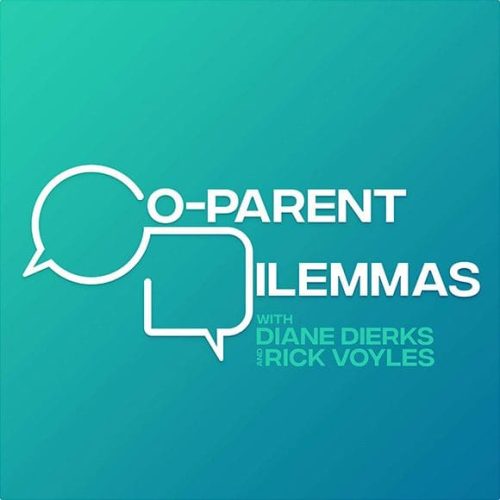How Can Colleagues Build Empathy and Resolve Conflicts Effectively?-5 Effective Methods
Introduction:
Workplace conflicts are inevitable. Differences in perspectives, communication styles, or work priorities can create misunderstandings and tension among colleagues. However, resolving conflicts doesn’t have to be destructive; it can become an opportunity for Growth, teamwork, and stronger professional Relationships.
The key to navigating conflict successfully lies in building empathy—understanding and appreciating the feelings and experiences of others. By fostering empathy, colleagues can transform conflicts into opportunities for connection and collaboration. Here are 5 effective methods to build empathy and resolve conflicts in the workplace.
1. Listen to Understand, Not to Respond
1. It Creates a Safe Space for Open Communication
When people feel heard, they are more likely to express their concerns openly and honestly. Listening to understand removes defensiveness from the conversation and creates a safe environment where both parties can share their thoughts without fear of judgment.
Why It Helps Resolve Conflicts: Open communication is essential to uncovering the root cause of a disagreement. When colleagues feel comfortable sharing their perspective, it becomes easier to address issues collaboratively.
2. It Validates the Other Person’s Experience
Listening to understand involves paying attention not just to words but also to tone, emotions, and underlying concerns. When you acknowledge the other person’s point of view, it validates their experience, helping them feel respected and understood.
Why It Helps Resolve Conflicts: Validation reduces emotional intensity and shifts the conversation from frustration to empathy. When colleagues feel understood, they are more willing to work together to resolve conflicts.
3. It Prevents Misunderstandings
Many conflicts escalate because of assumptions or misinterpretations. When you focus on truly understanding what the other person is saying, you reduce the chances of miscommunication. Instead of jumping to conclusions, you clarify their thoughts and intentions.
How It Works: Use phrases like:
- “Can you clarify what you mean by that?”
- “So, what I’m hearing is that you’re feeling overwhelmed by the project deadlines. Is that right?”
Why It Helps Resolve Conflicts: Clear communication minimizes misunderstandings, ensuring that both parties are on the same page and can address the real issue.
4. It Shifts the Focus from Blame to Resolution
Listening to respond often leads to defensiveness, where each party is focused on proving themselves right or assigning blame. However, when you listen to understand, the focus shifts from winning the argument to resolving the conflict.
Why It Helps Resolve Conflicts: By eliminating the blame game, colleagues can collaborate to find solutions that address both perspectives and build mutual respect.
5. It Builds Trust and Strengthens Relationships
Empathy and trust go hand in hand. When colleagues practice listening to understand, it shows they value each other’s opinions and feelings. This fosters trust, which is essential for resolving conflicts effectively.
Why It Helps Resolve Conflicts: Trust allows colleagues to approach disagreements without fear, knowing the focus is on solutions rather than personal attacks. Stronger relationships lead to healthier, more productive work environments.
6. It Encourages Thoughtful Responses
When you focus on understanding rather than reacting, you give yourself time to process the situation and respond thoughtfully. Thoughtful responses lead to constructive conversations instead of emotional outbursts.
Why It Helps Resolve Conflicts: A calm, measured approach reduces tension and opens the door to solutions that work for both parties.
2. Acknowledge Emotions with Affect Labeling
1. It Reduces Emotional Intensity
During conflicts, emotions can often overpower logical reasoning. An angry or frustrated colleague may struggle to communicate clearly, which can escalate the situation. By naming their emotions—such as “I sense you’re feeling overwhelmed” or “It seems like you’re frustrated”—you help them feel recognized and validated.
Why It Works: Affect labeling activates the brain’s ability to process emotions rationally. Once emotions are acknowledged, the intensity often decreases, creating a calmer environment to resolve conflicts.
2. It Builds Trust and Connection
Acknowledging someone’s emotions shows that you’re not dismissing their feelings but instead taking the time to understand their experience. This fosters trust and strengthens interpersonal relationships—key elements in being able to resolve conflicts effectively.
Example: Instead of responding defensively to a colleague’s frustration, saying, “It sounds like you’re really concerned about this project deadline” communicates empathy and understanding.
Why It Works: When colleagues feel heard and respected, they are more likely to engage constructively and work with you to resolve conflicts collaboratively.
3. It Prevents Misunderstandings
Conflicts often arise from assumptions or misinterpretations of emotions. Affect labeling ensures you’re correctly identifying the emotional root of the problem. This Clarity reduces misunderstandings and allows both parties to focus on the real issue at hand.
Why It Works: By acknowledging emotions like Stress, anger, or disappointment, you set a solid foundation for addressing concerns directly, helping colleagues move toward solutions and resolve conflicts faster.
4. It Encourages Open Dialogue
Affect labeling creates a safe space for honest communication. When emotions are acknowledged without judgment, colleagues feel more comfortable expressing their thoughts and needs. This leads to open dialogue—a critical step in finding mutual solutions and resolving conflicts.
Example: Saying, “I can see this has been frustrating for you. Let’s talk about what’s going on” opens the door to understanding their perspective and working together to resolve conflicts effectively.
Why It Works: Open conversations foster transparency and create a team-focused approach to conflict resolution.
5. It Promotes Emotional Intelligence
Using affect labeling enhances emotional intelligence by encouraging self-awareness and empathy. When colleagues practice identifying and validating emotions, they develop stronger communication skills, making it easier to resolve conflicts in the future.
Why It Works: Emotional intelligence helps people respond thoughtfully rather than react impulsively, reducing the likelihood of recurring conflicts.
6. It Focuses on Emotions Before Solutions
Often, conflicts escalate because people jump to solving the problem before addressing the emotions involved. Affect labeling acknowledges the emotional side first, which is necessary before moving toward logical solutions.
Why It Works: By addressing emotions, you create a smoother path to resolve conflicts, as both parties feel understood and ready to collaborate on solutions.
3. Shift the Focus to Shared Goals
1. It Reduces “Us vs. Them” Mentality
When conflicts occur, colleagues can quickly become adversaries, viewing each other as part of the problem rather than allies. Shifting to shared goals reminds both parties that they’re on the same team and working toward the same end result.
Why It Helps to Resolve Conflicts: Focusing on mutual objectives reframes the issue. Instead of battling each other, colleagues unite against the problem itself, fostering a sense of partnership and trust.
Example: “We both want this project to succeed—let’s figure out how to get there together.”
2. It Creates a Collaborative Mindset
Shared goals encourage colleagues to work with each other rather than against each other. By aligning on what they both want to achieve, they open the door to collaboration and creativity in problem-solving.
Why It Helps to Resolve Conflicts: A collaborative approach shifts the focus from pointing fingers to finding solutions, which minimizes defensiveness and promotes teamwork.
Example: “If we can meet this deadline together, we’ll both look good and help the team succeed.”
3. It Builds Empathy Through Perspective Alignment
When colleagues focus on shared goals, they start to see the bigger picture. This perspective shift makes it easier to appreciate the other person’s challenges and motivations, which naturally builds empathy.
Why It Helps to Resolve Conflicts: Recognizing that both parties share similar pressures or aspirations helps reduce frustration and increase mutual understanding.
Example: “I see we’re both feeling the pressure of this deadline. How can we split up the tasks to make it easier on both of us?”
4. It Shifts Energy Toward Solutions
Focusing on shared goals redirects emotional energy away from the conflict itself and toward actionable solutions. Colleagues can move past disagreements and channel their efforts into resolving the problem together.
Why It Helps to Resolve Conflicts: Solutions-based discussions prevent the conversation from getting stuck on who’s right or wrong and keep it productive.
Example: “Our goal is to deliver great results to the client. What steps can we take now to get there without unnecessary stress?”
5. It Reinforces Team Success Over Individual Differences
When shared goals become the focus, the success of the team or organization becomes more important than personal grievances. This helps colleagues prioritize what’s best for the group over their differences.
Why It Helps to Resolve Conflicts: Recognizing that success is a team effort encourages compromise, open communication, and a greater willingness to work together.
Example: “At the end of the day, we both care about delivering quality work. Let’s figure out how to get there together.”
4. Practice Perspective-Taking
1. It Reduces Misunderstandings
Conflicts often arise when colleagues feel misunderstood or unheard. Perspective-taking allows you to see the situation from the other person’s point of view, reducing assumptions and clearing up miscommunication.
Example: Instead of thinking, “Why are they so upset over a small delay?” ask yourself, “How might this delay impact their workload or goals?”
Why It Works: When you make the effort to understand your colleague’s perspective, you uncover the root causes of the conflict, which makes it easier to resolve conflicts effectively.
2. It Builds Emotional Connection
Perspective-taking is an essential part of empathy, which fosters emotional connection between colleagues. By understanding what someone else is experiencing, you build trust and create a safe space to openly discuss and resolve conflicts.
Practical Tip: Express this understanding out loud with phrases like, “I hadn’t realized how stressful this project has been for you. Let’s figure out a way forward together.”
Why It Works: Emotional connection helps defuse tension, allowing both parties to focus on collaborative problem-solving to resolve conflicts.
3. It Reduces Defensiveness
During a conflict, it’s easy to become defensive and dismissive of the other person’s point of view. Perspective-taking shifts the focus from who is “right” to understanding each other’s experiences. This shift reduces defensiveness and creates a more open, solutions-focused discussion.
Example: Instead of blaming, say, “I can see how my decision might have made things difficult for you. What can we do to fix this?”
Why It Works: When you acknowledge someone else’s perspective, they’re more likely to lower their guard and work with you to resolve conflicts.
4. It Encourages Collaboration
Perspective-taking reframes the conflict as a shared issue to solve rather than a battle to win. By understanding your colleague’s motivations and needs, you can work together toward solutions that satisfy both sides.
Practical Tip: Ask questions like, “What’s most important to you in this situation?” or “How can we meet both of our goals?”
Why It Works: Collaboration based on understanding and empathy makes it easier to resolve conflicts while preserving relationships and mutual respect.
5. Collaborate on Solutions
Once emotions have been acknowledged and perspectives have been shared, focus on creating solutions together. Collaborative problem-solving encourages colleagues to work as a team rather than opponents.
How to Apply:
- Ask, “What would make this situation better for both of us?” or “How can we work together to resolve this?”
- Be open to compromise and look for win-win solutions that address both parties’ needs.
Why It Works: Collaborating on solutions strengthens trust, builds mutual respect, and ensures that both colleagues feel valued and heard.
Final Thoughts
Building empathy is the foundation for resolving conflicts effectively in the workplace. By listening to understand, acknowledging emotions, focusing on shared goals, practicing perspective-taking, and collaborating on solutions, colleagues can transform disagreements into opportunities for growth and connection.
Conflict doesn’t have to harm relationships—it can actually strengthen them. When empathy becomes part of workplace culture, teams communicate more effectively, solve problems together, and thrive in an environment of respect and understanding.
The post How Can Colleagues Build Empathy and Resolve Conflicts Effectively?-5 Effective Methods appeared first on Douglas E. Noll.
Originally Published on https://dougnoll.com/
Douglas E. Noll, JD, MA left a successful career as a trial lawyer to become a peacemaker. His calling is to serve humanity, and he executes his calling at many levels. He is an award-winning author, teacher, trainer, and a highly experienced mediator. Doug’s work carries him from international work to helping people resolve deep interpersonal and ideological conflicts to training life inmates to be peacemakers and mediators in maximum-security prisons. His website is https://dougnoll.com.


























